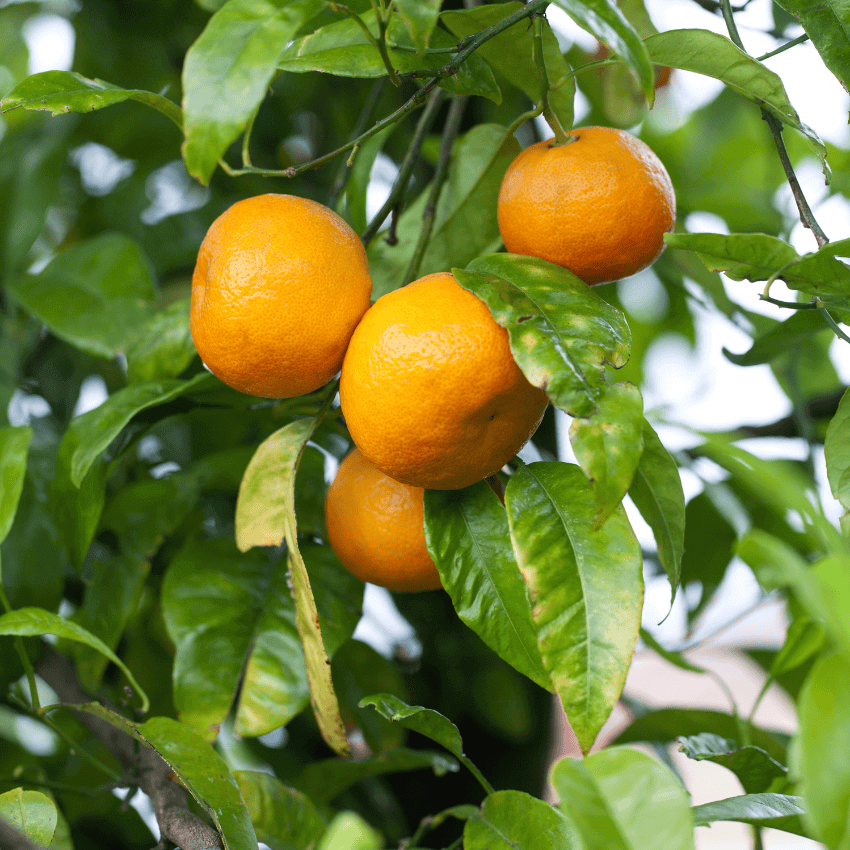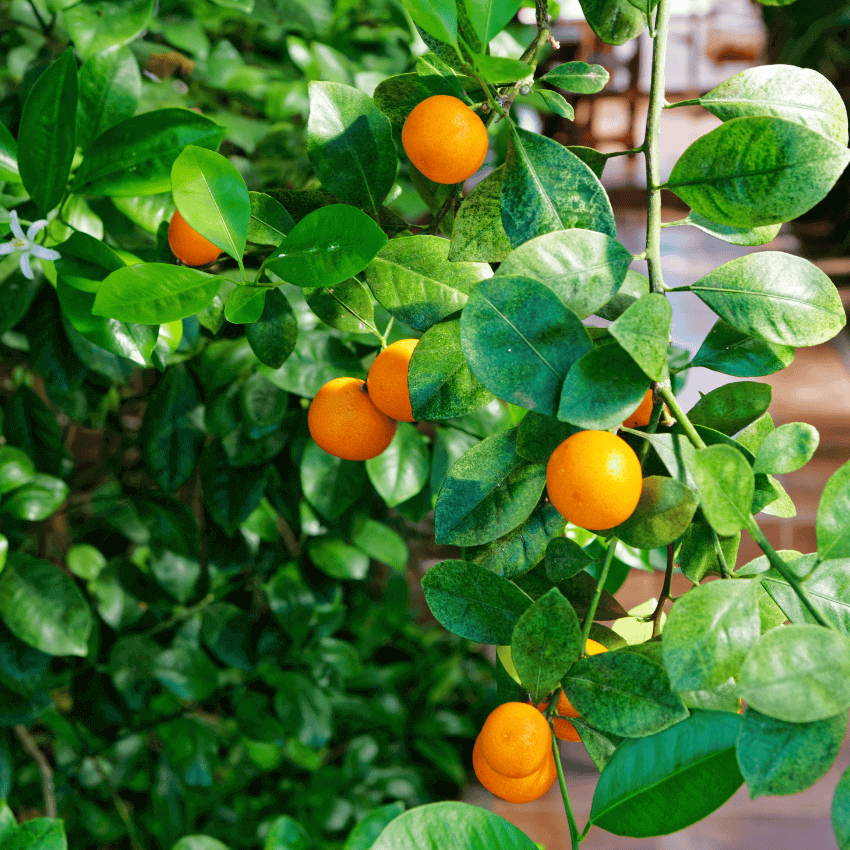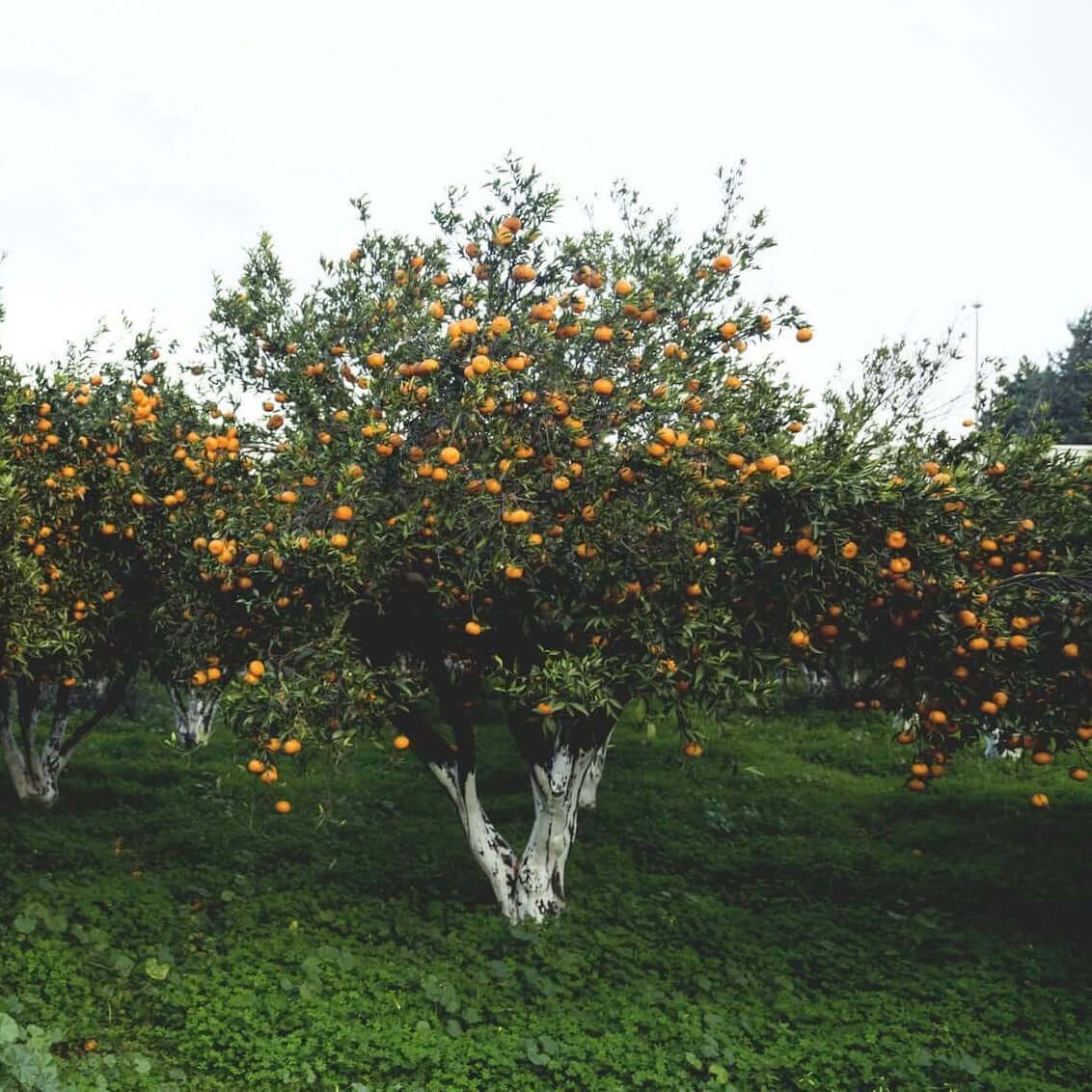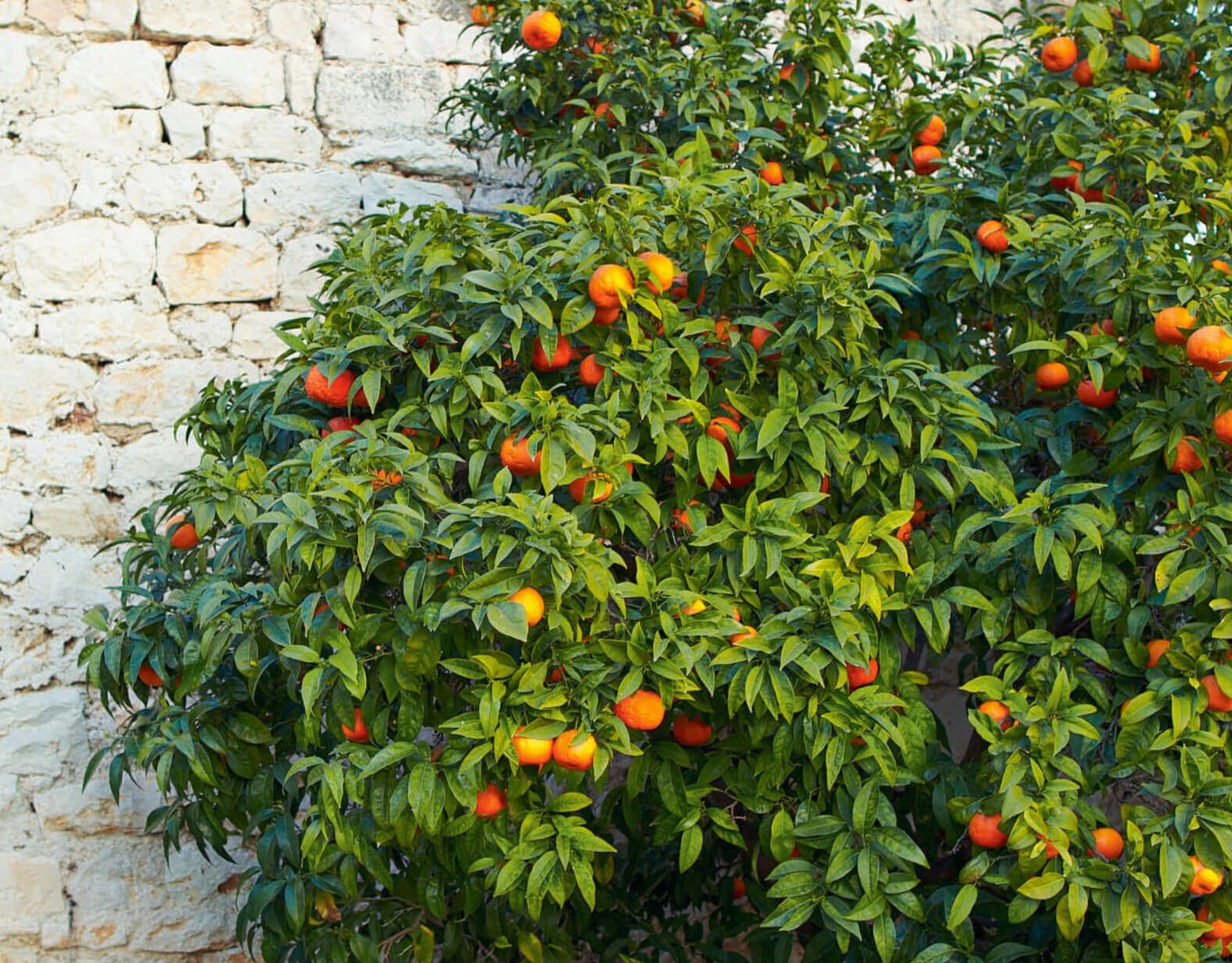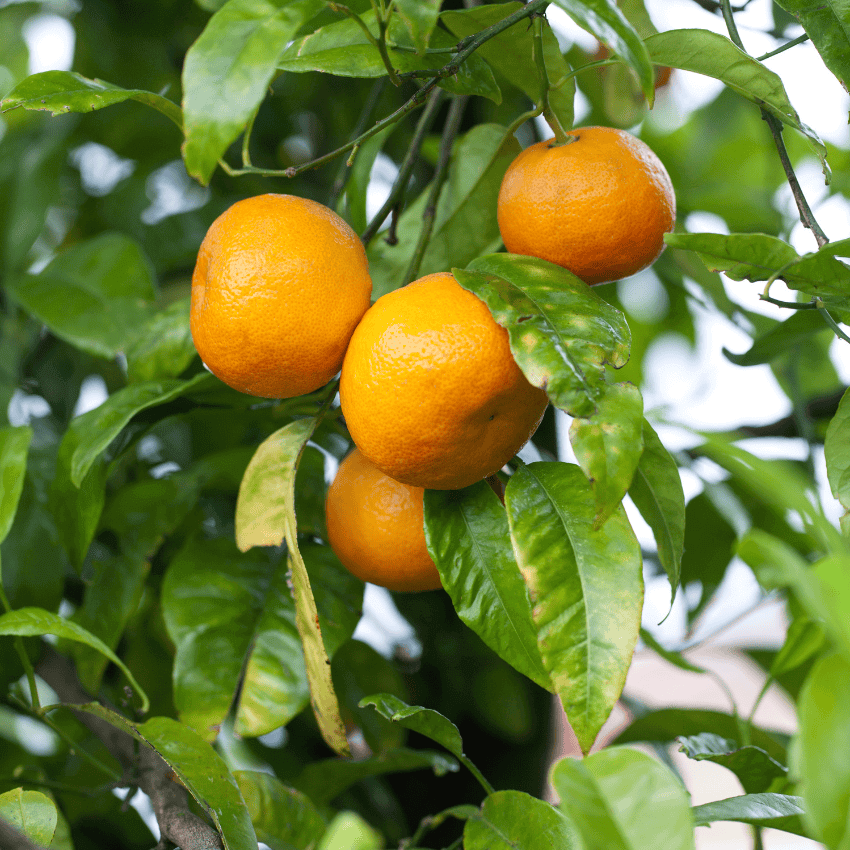Are tangerines and mandarins the same? Tangerines are mandarins. Mandarins are easy to peel orange fruits with segments that separate easily. Mandarins are a diverse group that include Satsumas, Clementines, true mandarins, tangerines, and hybrids.
Citrus needs full sun, moist soil, and aerated soil. Fast drainage is essential. Water regularly and consistently the first year for deep roots. Reduce frequency after the plant is established but water deeply. Citrus do not like to be dry, or soggy.
CARE FOR OUTDOOR CITRUS, IN GROUND:
For outdoors, plant your Owari Satsuma mandarin tree in a location that is wind-free, frost-free, and will receive at least 8 hours of full sun in a well draining soil that is porous and aerated. Adding soil amendments like Kellogg Palm, Cactus, & Citrus Mix will provide the right balance between moisture retention and drainage. Fast drainage for citrus plants is essential.
Cold hardy to 28℉, the Owari Satsuma mandarin tree may be able to survive temperatures lower than 28℉ but damage to the foliage, branches, flowers, and fruit is possible. Protect your citrus tree from frost or cold temperatures below 32℉ with the use of frost cloth when temperatures drop, or plant in a sheltered location close to a house or structure.
Water your Owari Satsuma tree regularly and consistently the first year to develop deep roots. As the roots become established in the ground you may reduce the frequency. Avoid shallow, frequent waterings and do not allow roots to sit in standing water. Citrus prefer deep watering less frequently. Several factors will determine how often to water such as temperature, soil porosity, wind, and tree size.
Fertilize in spring with Gardner & Bloome 8-4-2 Organic Citrus & Fruit Tree Fertilizer. Be sure to follow the instructions on the packaging.
Mulching can help conserve ground moisture and help suppress weed growth. Apply a layer of mulch that is 2 or 3 inches deep on the surface. Keep mulch away from the base of the trunk (at least 6 inches) to avoid disease or rot. Do not allow the mulch to touch the trunk.
Pruning your Owari Satsuma mandarin tree in the late winter can improve air circulation and maintain the desired size and shape. Do not cut back more than one third of the tree in a single season. Over-pruning can expose the trunk to direct sun and cause a sunburn. Prune to remove any damaged, diseased, crossed branches, or branches growing towards the center of the tree. Owari Satsuma mandarin is a slow growing tree at first with sparse branching. Pruning can induce more branching for a densely branched tree. Tree size can be easily managed with pruning.
Pruning the lower side branches along the trunk will result in the appearance of a taller trunk. All citrus trees are grafted and any new foliage growth that appears below the graft union (generally 4-8 inches from the soil surface) should be removed immediately with clean, sharp pruners. These vigorous branches or “suckers” are from the root stock and rob energy from the fruiting wood. To prevent damage or disease to your citrus tree, use pruners that are clean and sharp.
CARE FOR CONTAINER CITRUS:
In a container, an Owari Satsuma mandarin tree will be smaller than a tree grown in the ground, but the fruit size will be the same, making this the ideal mandarin for your patio, balcony, or porch. A porous clay pot is best for container grown citrus as it allows air exchange and drainage, and helps maintain a healthy root system. Use a pot that is about twice the size of the root ball, or has 3-4 inches of space around the root ball. Use a soil mix that is designed for citrus. Drainage holes are important if the pot is not porous. Water your container-grown citrus more frequently than in-ground citrus but do not allow the roots to sit in standing water. Be sure to protect your potted Owari Satsuma mandarin tree from frost by moving it to warmer, sheltered areas, or use a frost cloth if the cold period is brief. Feed your outdoor container grown citrus in late winter and again in June.
